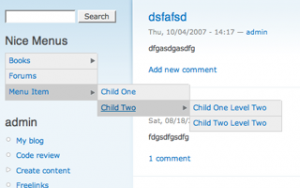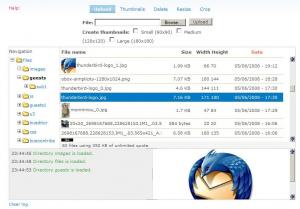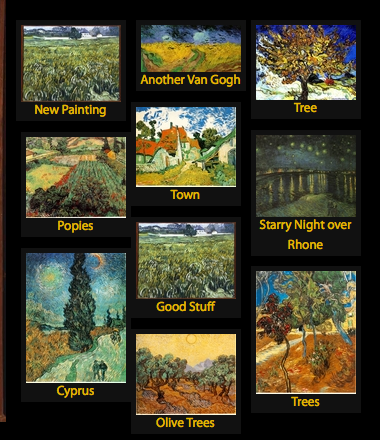반응형
드루팔 추천모듈 40 리뷰
드루팔을 인스톨할때 처음부터 모듈을 구성하는것은 초보자로서 상당히 어려운 것 일수도 있습니다.
전체모듈의 기능을 다 알수 없을바엔 아예 추천모듈을 올려 놓고 천천이 알아가면 될것 입니다.
또 모르드래도 언젠간 알게 될 것 이며 또 필요없다고 생각되면 디스 시키면 됩니다.
아래 40개 모듈은 드루팔을 많이 사용하는 외국인들이 올린것인데 카피해 옮겨 봅니다.
소프트웨어 정서나 프랫폼 취향이 서구인들과 동양인 특히 한국인은 좀 다르지만 운영상 필수 어플이라는 점에서는 같으리란 생각입니다.
모듈의 중요 구성도는
1,인터페이스 커스트마이징 위주로 구성되며,
2,그다음이 어드민 관리자 편의성이며,
3,다음이 빌딩된 컨텐츠를 어떻게 퍼블리싱 할 것 인지에 대한 유틸리티이며,
나머지는 사이트 운영상 필요한 수많은 Tip으로서의 편의성으로 구성되 있습니다.
다만 주의할 것은 오픈소스로 전세계에 개방된 관계로 인해서 각국가에 따라서 여러가지 이유로 인해서 호환성에 약간씩 문제가 있는 모듈도 있기때문에 무조건 삽질로 해결하려 하지 말고 정보를 취합하는것이 중요합니다.
처음 사용해 보는 분 이라면,
국내유저들이 잘 알고 있는 제로보드나,테크노트나,그누보드 등 과는 좀다른 확장성에 매료되리라고 생각합니다.
필수 모듈 3개
Views - Broadly speaking, this module empowers non programmers to build dynamic streams of content displaying any number of fields. The content may come from nodes (a.k.a. content typesand fields), users, system log entries, etc. You can display this stream in any number of formats including RSS feeds, tables, or just the vanilla view for a content type. You can also create pages or blocks -- its very tightly interwoven with drupal. Nearly every drupal module worth using is integrated with this module. Extremely powerful when used in combination with CCK.
Panels -

I believe Panels + CCK & Views is a hint at what drupal will look like 3 years into the future. I had to change my pants after the first time I witnessed it. At a very simple level, you could think of it as a layout manager. Create a 1,2,3 column layout. Or a 3 column layout with a full width footer and header, and plop pieces of content in them -- say a view, a block, or anode. That description, however does not do it justice. Since version 3, its positioned itself as a replacement for drupal core's clunky block system. It can now override a node page, and can be used to place content all over the place. It also introduced a concept of contexts, selections rules, and relationships. These are-
-
- concepts that deserve a series of blog posts, but lets just say its solving some of the weirdest, mind numbing, bug creating problems found in advanced websites. Ironically, I used to hate this module, but after version 3 I will defend its awesomeness to the death!
- Admin Menu - Quick Dropdown menu to all admin areas. Makes any setting only a click away, instead of 3 to 6 clicks away.
- RootCandy - A theme specially designed for administration. Drupal 7 comes with an admin theme included, but this is still highly recommended in drupal 6.
Content and SEO
- Pathauto - Automatically create human readable URLS from tokens. A token is a piece of data from content, say the author's username, or the content's title. So if you set up a blog entry to use tokens like [author-name]/[title] then a blog entry by "Phil Withersppon" titled "my great day" will be rewritten example.com/phil-witherspoon/my-great-day.
- Printer, email, and PDF Versions - There are still people out there who prefer to print out content to read later. This module does just that, and also lets them send your content via email.
- NodeWords - A very poorly named module that's great at letting you edit meta tags.
- Page Title - Lets you set an alternative title for the <title></title> tags and for the <h1></h1> tags on a node.
- Global Redirect - Enforces numerous well thought out SEO rules, for example since I don't use this module you could access my content at "http://www.nicklewis.org/node/1062". This module however will search for the alias and 301 to the proper URL http://www.nicklewis.org/40-essential-drupal-6-modules. (thanks Jeff!)
- Path Redirect - Simple idea: make it easy to redirect from one path to another. Does a good job at it.
- Taxonomy manager - Makes large additions, or changes to taxonomy really really easy and painless.
- Node Import - Made it shockingly easy to import 2000 csv rows, tie rows to CCK fields (or locations), and even will file it under the right taxonomy terms in hierarchy so long as you plan ahead.
Navigation
- Menu Block - Lets you split menus into separate blocks based on depth. Say you have a top level menu link "Articles" with sub menu links "Politics", "Technology", "lifestyle". This block would let you show the sub menus in the right sidebar, and the top level "article" as tabs in the header.
- Taxonomy Menu - Automatically generate menu items for categories. Handles syncing between taxonomy and menus, and is ready to be used in conjunction with views or panels.
- Custom Breadcrumbs - Set up custom breadcrumb paths for content so that every page doesn't just have a breadcrumb back to "home". (note: i've used menu_trails a lot too.)
- Nice Menus - Drop down menus (for people who are into that kind of thing).

WYSIWYG Editors + Image Uploading
- WYSIWYG API - The standard integration module.
- CKEditor - Currently my favorite WYSIWYG editor. WYSIWYG API only supports CKEditor on its dev version (at the time of this writing). For the time being, I use this module instead of WYSIWYG api. Regardless, the rest of the world probably uses WYSIWYG api.
- IMCE - File browser / image inclusion for WYSIWYG editors. CKeditor is integrated out of the box, WYSIWYG API implementations require a bridge module.

 Video and Image Handling
Video and Image Handling
- Filefield - Base CCK file upload field. Useful on its own, but also required by other essential modules.
- ImageAPI, ImageCache, Imagefield - These three work together. ImageAPI handles low level integration with server side image processing (e.g ImageMagick). ImageCache allows you to set up presets for automatic resizing, cropping, and a host of other operations you'll probably never need to use. ImageField then provides an upload field to a piece of content, which you can use imagecache presets to resize in the display. Imagefield is very well integrated with Views and CCK. The paintings on the right show a bunch of images automatically resized using this technique.
- Lightbox2 - If you've set up your imagefields, lightbox2 lets you add another layer of options. For example, display image resized at 300px wide on the page, but blow it up to full size when clicked. Like Imagefield, lightbox 2 is well integrated with Views and CCK. Very powerful combination.
- Embedded Media Field - Embed video and audio files from dozens of third party providers ranging from youtube, to services you've probably never heard of.
User Profile, Ratings & Notifications
- Content Profile - The core profile module sort of sucks. This turns profiles into nodes allowing you all the options of views and CCK.
- Voting API + Fivestar - The standard voting widget of Drupal.
- Notifications - Provides the ability to send emails when someone comments, or replies to a comment. Has a host of other features.
- Captcha + Recaptcha - Standard Antispam system. In use on this very site.
Stuff Marketers Will Love
- Webform - We all know visitors love filling out forms. This module lets your marketing team create custom forms, and collect whatever info they want.
- Google Analytics - Simple integration of drupal with google Analytics.
- Service Links - Easy "share this" links for content. Supports digg, facebook, delicous and a bunch of other social web 2.0 services.
Events and Calendars
- Date - CCK field for handling dates, and date ranges.
- Calendar - Integrated and controlled by views.
Location and Mapping
- Location - Standard API for collecting addresses and lat/long. Integrated with Views and CCK. Somewhat difficult to use, but its a somewhat difficult problem it solves.
- Gmap - Display locations in GMap.
Ecommerce
- Ubercart -- All ecommerce in drupal should use this module. Has its own universe of
- hundreds of contribs for some of the really weird stuff.
For Developers
- Devel - Offers an enormous amount of information for developers, including: theme template variables, and overrides, browsable data structures, and datasets for performance-tuning. Just the debug function dsm(); makes it worth the download.
- Backup & Migrate -- Greatly eases the pain of moving changes from your local development environment to the live server and vice versa.
- Drush - Its actually not really module, but a "Swiss army knife" set of tools that are run from a command line. One example command is "drush dl views": running it will automatically download the latest version of views and place it in the right drupal folder. 1 second command instead of a 1 minute process of downloading from drupal, uploading via FTP. There's many other commands that are just as useful.

원본링크:http://www.nicklewis.org/40-essential-drupal-6-modules
|
|
반응형
